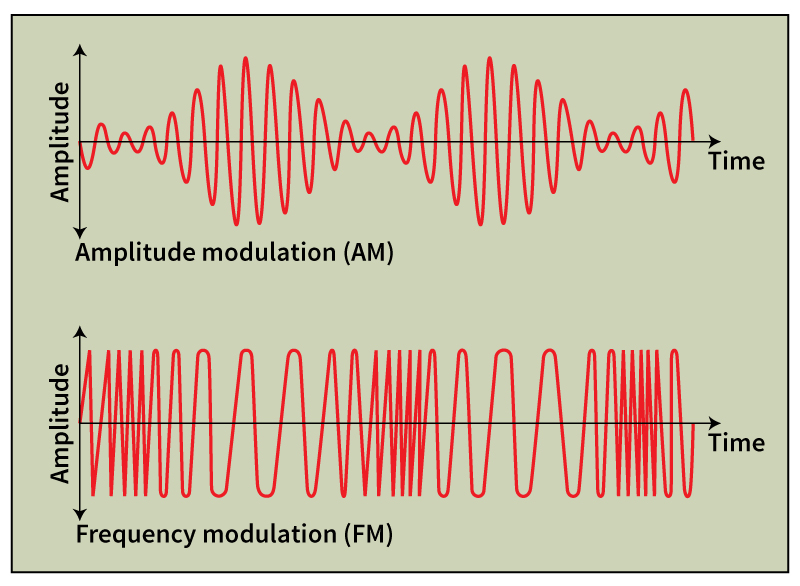Amplitude modulation, often called simply AM, is a method of sending sound signals on radio waves. Radio waves, like ocean waves, have a measurable amplitude—that is, the range from the wave’s peak to its trough. By modulating (varying) the amplitude of a radio wave, the wave can be made to carry sound or another signal over long distances. An alternative method for sending signals by radio, called frequency modulation (FM), varies the radio wave’s frequency—that is, the rate at which wave crests pass a fixed point (see Frequency modulation ).

Sound also travels in waves. To transmit sounds in AM, a radio wave’s amplitude is varied to follow the shape of the sound wave. When the radio wave arrives at a listener’s location, a radio receiver converts its amplitude into an electrical voltage. The voltage, in turn, is amplified and powers a speaker. Because the voltage is converted from the radio wave’s amplitude, and the wave’s amplitude follows the shape of the original sound wave, the speaker’s vibration reproduces the original sound.
AM radio receivers are simple and inexpensive, contributing to their long popularity. AM receivers are extremely sensitive to electrical noise caused by lightning and nearby electric motors, reducing their quality of output sound. FM signals are less vulnerable to interference. But digital methods of communication—in which the signal is transmitted in the form of numeric code—have increasingly replaced both AM and FM radio.
See also Radio (Transmitting radio waves) .
